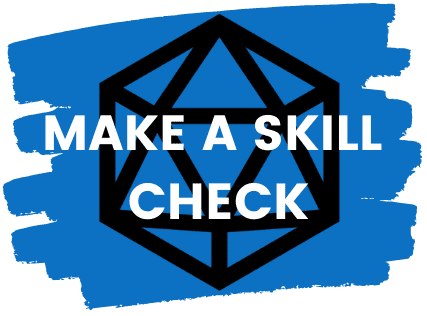Your wizard just leveled up, and you are ready for the best part: choosing new spells. You just reached level 5, and this means you are getting two new juicy 3rd level spells. Immediately, you choose Fireball (because we all do), and then you get stuck… do I take Slow or Haste? Which is better: debuffing my enemies or buffing my allies?
In older editions, there was a clear winner between Slow and Haste. In 5e, however, they are equally useful but in different contexts. Against a group of weak-ish enemies, you want to use Slow to control the battlefield. Against a single foe, Haste is better to maximize your action economy.
The buff (power up yourself or your allies) vs. debuff (depower your enemies) is an argument as old as gaming. Dungeons & Dragons 5th edition is not different. Slow and Haste are twin spells that have kept this debate alive since 1974, when they first came out in OD&D’s (Original Dungeons & Dragons) Men & Magic. Let’s take a look at each.

Table of Contents
Rules-as-Written (RAW) Analysis
Let’s take a detailed look at these two spells. First and foremost, Slow and Haste are strong spells because they significantly affect the action economy.
You may be wondering ‘what is an action economy?” The definition I work from is “the creation, distribution, or exhaustion of actions in combat by characters in a game.” As you can tell, understanding this is essential to doing well in fights.
Giving your allies more actions and denying options to your enemies can decisively shift the outcome of a battle. It’s also why many weak minions can sometimes be more powerful than a single brute because the minions can take far more actions in a single round.
Both spells are 3rd-level transmutation spells, take 1 action to perform, can’t be cast at higher levels, and both require maintaining Concentration (more on that here). They are available in the Sorcerer and Wizard spell lists and, by extension, in the Eldritch Knight and Arcane Trickster lists (because they pull from the Wizard spell list).
Slow
- Area of Effect (AoE): Slow has an amazing range and area of effect. With a single casting of this spell, you can affect up to six creatures within a 40-foot cube area. In a standard 5e mat, that’s an 8x8x8 square, meaning a 64 square block (on the ground, at least). Neat!
- Effects: A Slowed creature has its speed halved, a penalty of -2 to AC and Dexterity saving throws, no reactions (meaning no Opportunity Attacks), and on its turn, it can only use an action or a bonus action. In addition to that, spells take more time to be cast and have a chance of failure. These effects are awesome: Slow allows for combos with Dexterity saving throw-spells (like Fireball or Web) and severely limits the target’s options.
- Repeated Saves: On the other hand, Slow requires a Wisdom save to be effective in the first place and allows for repeated saves at the end of each of the creature’s turns. So, there’s a high chance that a target won’t be affected for more than one or two rounds. Still, if their Wis saves are weak, you could debilitate them for the entire fight.
Haste
- Ranged; Single Target: You can cast Haste upon a single creature up to 30 feet. Sadly, it’s only a single creature (unless you’re a sorcerer with Twinned Spell), and you cannot affect more targets since it is a Concentration spell (which Twinned gets around). The good news is it’s ranged.
- Effects: This spell gives the target double movement speed, +2 to AC, advantage on Dexterity saving throws, and an additional limited Action (only one melee weapon attack, Dash, Disengage, Hide, or Use an Object.) These are super useful buffs to give to your front-line meat shields. Note that Player Characters (PCs) with Extra Attacks can only use one attack for the Hasted action.
- Drawbacks: Unfortunately, Haste comes with a severe drawback. Once the spell ends (or Concentration is lost) the target suffers a wave of lethargy, and cannot move or take actions for one turn. As far as drawbacks go, that’s not bad. Supposing you had it active for a full turn and were able to attack twice, then it already paid for itself.
How to Use Slow and Haste Effectively
On the surface, these spells look quite similar. They have similar casting conditions, same level, and they both affect the action economy. But it’s their specifics that make them extremely different but equally useful.
Slow
That said, their main tactical usefulness comes down to saving throws. Yes, Slow can be amazing on that single big boss, but how likely is it that it will fail its save? Most big monsters have strong saves, magic resistance, or even legendary resistances.
Even if the spell is successful, the monster will likely break free on its repeated saves at the end of its turns.

Supposing you have a Sorcerer that has the Heightened Spell metamagic, it can help, but only on the first saving throw. Divination Wizards can use their Portents to replace the save’s outcome, but that’s only if they roll low and think this is the best use of them. Alternatively, someone could Bane the sucker to subtract a d4 from every save.
Slow is best used on a horde of small-but-not-fragile monsters. Small creatures that act in packs are more likely to have bad saving throws, counting more on strength in numbers. Also, six targets is a lot. Some will save, but it’s unlikely that they will all save. Slow shines when the numerous enemies with medium health, otherwise they might be better dealt with in a single Fireball.
Haste
Now, this argument is the exact opposite when we talk about Haste. What can you do if that single target resists all your saving throws, or if it’s immune to magic? You start buffing your allies!
When I DM, I always suggest to my spellcasting players to add some utility spells to their lists. In this way, they can still be (and feel) useful even against a magic-resistant enemy. Haste is one of those spells.
Unfortunately, these are the only upsides in this kind of situation. The spellcaster must be very careful after casting Haste. Losing Concentration might mean bad news to your Hasted ally, forcing them to stand still during that “wave of lethargy.”
I nostalgically remember the times when, in 3rd edition, these spells were reversed. Slow was a single-target debuff, and Haste was an incredible party buff. On the other hand, casting Haste at the beginning of each fight was almost mandatory. The spell was that good.
Buffing or Debuffing?
Coming full circle from our intro, is it better to buff your allies or debuff your enemies? I personally am more in favor of the buff argument, but let’s take a closer look.
Pros and Cons of Buffing
- No Saves: As I said earlier, buffing doesn’t have to check any saving throws to succeed. Buffing works regardless of the enemy you are facing. Well, unless they counterspell it. Also, be mindful of tricks that can break Concentration (our post here).
- Different Buffs Stack: If you have time to prepare, the PCs can turn themselves into unstoppable fighting machines.
- Buffs are Expensive: They are, for the most part, single-target spells (Barkskin, Enlarge, Enhance Ability, etc.), and a wizard shouldn’t have to spend all their slots buffing the front line. A Ring of Spell Storing can help substantially, though, since the front line characters can use their own turn to buff themselves, and they usually have proficiency in Con saves to help with Concentration.
Pros and Cons of Debuffing
- Unexpected Buffs: In a sense, when you debuff enemies, you are also buffing all your allies. Allies can then attack with fewer reserves and generally be more effective.
- Debuffing Always has a Saving Throw: The results can be amazing, but if the creature consistently succeeds on saves, you are just wasting spell slots and actions. For this reason, it’s much harder to stack debuffs.
- They can be Anti-climatic: Purely from a roleplaying perspective, winning a final battle with the help of a powerful debuff can be less satisfying. But maybe this is just my inner DM talking.
Summary
Slow vs. Haste is an age-old question. They both are useful spells that have a meaningful impact on the action economy:

- Slow has a big area of effect (AoE), but its dependence on saving throws makes it unreliable against a single, big enemy.
- Haste is single-target. It’s more reliable because you cast it on your allies instead of your enemies, but it comes with a severe drawback.
- Slow works best against large groups of weak-ish enemies, as there’s more chance for them to fail their save. If they’re really weak, it may be better to wipe them out with an AoE damage spell, like Fireball.
- Haste is better against a single, resistant foe. Where buffing your allies is a wiser choice.
- Haste also has out-of-combat usage that can help in tight binds, narratively.
- Buffing or debuffing is a contextual decision. There are pros and cons to each approach. Debuffing has a chance at more meaningful outcomes, but buffing never risks wasting a spell slot.







0 Comments
Trackbacks/Pingbacks